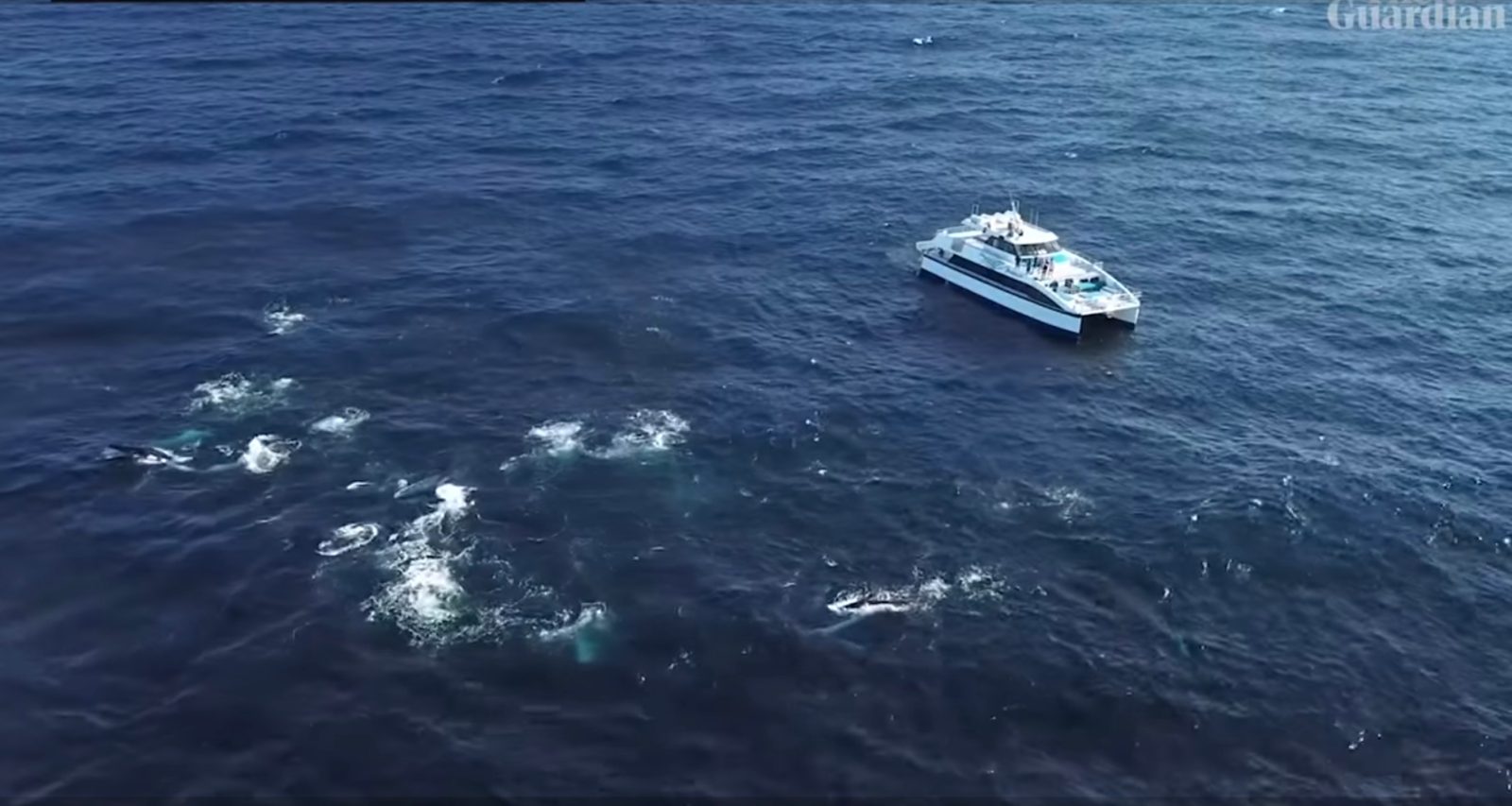
A drone pilot has taken a rare and spectacular video of a giant pod of humpback whales feeding together off Australia’s New South Wales coast. Experts say the craft’s footage is tantamount to catching lightning in a bottle twice within a year – and in nearly the same place that was first accomplished.
The drone video was uploaded Monday. It quickly attracted nearly 40,000 views with its arresting aerial images of a pod of 100 to perhaps as many as 150 humpback whales feeding off baitfish together. The footage was only the second time ever the mammals have been seen group-gorging in Australian waters. It was also the second time they were filmed engaging in bubble-net feeding off Australia. The latter involves whales driving krill or fish into a tight, defensive ball, swimming beneath them to release a burst of air, then surging upward to gobble the bubble up with its prey trapped inside.
A boat operated by ocean tour company Sapphire Coastal Adventures raced to the spot once the mega-pod had been spotted at work, and managed to record the spectacle. Accomplished still and drone photographer David Rogers captured the video of the humpback whales feeding all around. Sapphire Coastal owner and skipper Simon Miller said his boat would begin seriously rocking as creatures the size of city buses surged up and around, at times very nearby.
While astonishing in its own right, this week’s footage may also be critical in helping marine biology experts determine how whales may be altering their established habits in function of changing environmental conditions.
Normally humpbacks undertake massive feasting in Antarctica before swimming north for the June-August breeding season, when they focus foremost on reproduction. This week’s drone video of the humpback whale feeding frenzy was shot in roughly the same area where a group was captured hunting in the same way during their return trip last year – a repeat that may signal altering habits keeping pace with evolutions occurring underwater.
It could also be a consequence of growing humpback counts. Their currently estimated population of 35,000 is rising by about 11% per year, which could be effecting how and where they interact.
Given those suspicions – and recurrent feeding shows off Oz – it’s a fair bet marine biologists and drone pilots will be ready during upcoming migration periods, and keeping their eyes peeled for telltale bubbles rising from below.
FTC: We use income earning auto affiliate links. More.



Comments